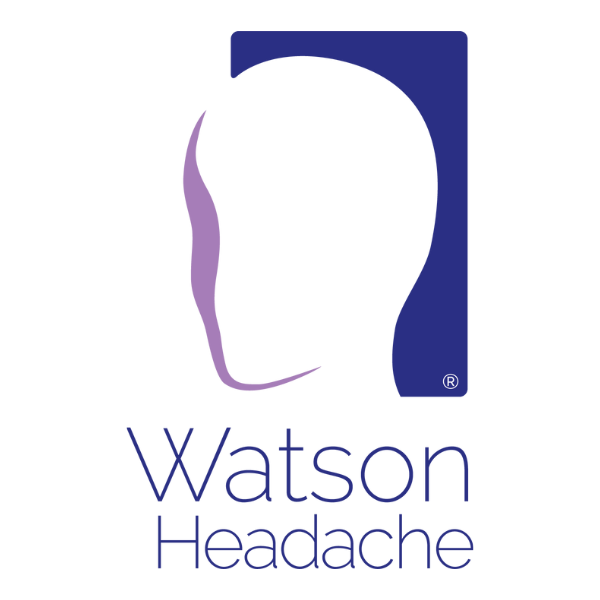The Background
Whilst aware of the neuroscientist’s eagerness to his query of the neurophysiological effect of reproduction and resolution (R&R) on nociceptive blink reflex (R2), see Edition 10 – Revisiting the Role of Conditioned Pain Modulation During Reproduction and Resolution of Head Pain, Watson feels it essential to provide some background. “Well, before we discuss the impact of R&R on R2 in migraineurs, it’s important to mention previous research involving migraineurs using the nociceptive blink reflex (R2) – a widely adopted instrumental evaluation of the processing of trigeminal nociceptive afferent information. This research has shown that in migraineurs, interictally, the reflex latency was decreased and amplitude increased, indicating that the TCC is sensitised. Building on this was additional research demonstrating modulation of R2 – the latency increased and amplitude decreased, i.e. desensitisation of the TCC post-administration of triptan medication.”
“Yes, I know this research,” replies the neuroscientist. “I am also aware of research in which anaesthetisation of the greater occipital nerve replicated this effect.” So, we have ‘pharma-modulation’ and ‘neuromodulation’, adds Watson’s colleague.
Reproduction and Resolution of Typical Head Pain in Migraineurs
“Yes, perhaps we have more than this because the study in which R2 was assessed during R&R of head pain showed precisely the same, i.e. in conjunction with the decreased referral of head pain, the latency of R2 increased, and amplitude decreased,(1)” discloses Watson. “So now we have ‘manual-cervical-modulation’,” laughs Watson’s colleague.
“This is interesting because, to my knowledge, this research is the first time a manual cervical intervention has been shown to modulate the very core of the migraine process,” replies the neuroscientist. “Furthermore, given that migraine is a phenotype of primary headache, these findings could have broader implications for treating other primary headache disorders, including tension and cluster headache.”
Watson then recounts his preoccupation with the neurophysiological effect of R&R since the early 90s and then a seminal clinical experience. A migraineur with a 20-year history presented interictally in 2005. Whilst migraine-free, he reported ten years of constant allodynia (central sensitisation – CS) in the left forehead. After five repetitions of sustained holds in which typical head pain was produced but which subsequently became less intense and easing more expeditiously, with succeeding holds to the point that on the fourth and fifth holds, the reproduction was minimal and resolved within seconds. The patient was then asked to palpate his forehead, and to his astonishment, his allodynia had disappeared. The research question was then straightforward…(1)
“Well, that’s great to hear,” exclaims the neuroscientist. “Desensitisation occurred quickly – this is a clinical correlate of the concept that constant barrage of noxious (cervical) afferent can induce not only chronic CS, but that long-term CS can be reversed quickly.”
Moving on
“Yes, and it is exciting to see that colleagues who have attended some of my courses, and are in research groups in the Netherlands and Germany, are now utilising R&R, its effect on allodynia and as a tool of demonstrating cervical relevancy, and building on this research,” Watson replies. “But I am a bit bemused because, if my (R&R) work is quoted, the wrong study is cited; they quote a study that demonstrated reproduction (only) of typical head pain in 95% and 100% of migraine, respectively.(2) From these studies, ongoing studies then reference researchers after my work in 2014, not only as the pioneers, but the misquote is perpetuated.”
Watson’s colleague, then draws Watson’s attention to a very recent study which the effect of upper cervical manual therapy on the blink reflex in subjects with migraine.(3) “What did they find,” enquires Watson. “Similar to your study in that the TCC was desensitised after the intervention.”
“That’s really exciting,” exclaims Watson. Meanwhile, the neuroscientist has been searching PubMed and has opened the article. “And it looks like they have acknowledged your research correctly!”
The Future
Watson eagerly peruses the article. “Yes, they have, and whilst the methodology is different, essentially, and the authors acknowledge, their findings reinforce my earlier study. This is great work, for in an environment in which the reason for sensitisation of the TCC is assumed to be CPM, this adds to the increasing body of evidence supporting the role of noxious cervical afferents in sensitising the TCC in migraineurs and why the upper cervical spine should be examined skilfully when investigating migraine, indeed, primary headache generally.”
“Interesting you should say that,” replies Watson’s colleague. “I have just seen a call for revision of the diagnostic criteria for cervicogenic headache (CGH) (‘Advocacy is required to present the evidence base for expanded clinical signs in the classification criteria for cervicogenic headache.’ (4) ) Are you suggesting that reproduction and resolution of typical head pain should be incorporated in any revision of the diagnostic criteria for CGH?”
“Yes, I agree on both counts, but in answer to your question, whilst it may seem premature, considering elementary neuroanatomy, emerging research and my over 40000 hours of clinical experience with over 10,000 headache and migraine patients, R&R is one of the most powerful clinical tools we, as manual therapists, have to determine the relevancy of cervical afferents in headache or migraine.”
While Watson has been studying the article, the neuroscientist and Watson’s colleague have been discussing the role of trigeminal noxious afferents, which seem to have been forgotten.
“What if noxious Trigeminal Afferents are the offenders?” asks the neuroscientist.
References:
- Watson DH, Drummond PD. Cervical referral of head pain in migraineurs: effects on the nociceptive blink reflex. Headache. 2014;54(6):1035-45.
- Watson DH, Drummond PD. Head pain referral during examination of the neck in migraine and tension-type headache. Headache. 2012;52(8):1226-35.
- Jafari M, Bahrpeyma F, Togha M, Hall T, Vahabizad F, Jafari E. Can upper cervical manual therapy affect the blink reflex in subjects with migraine and neck pain? J Man Manip Ther. 2023:1-8.
- Jull G. Cervicogenic headache. Musculoskelet Sci Pract. 2023;66:102787.

